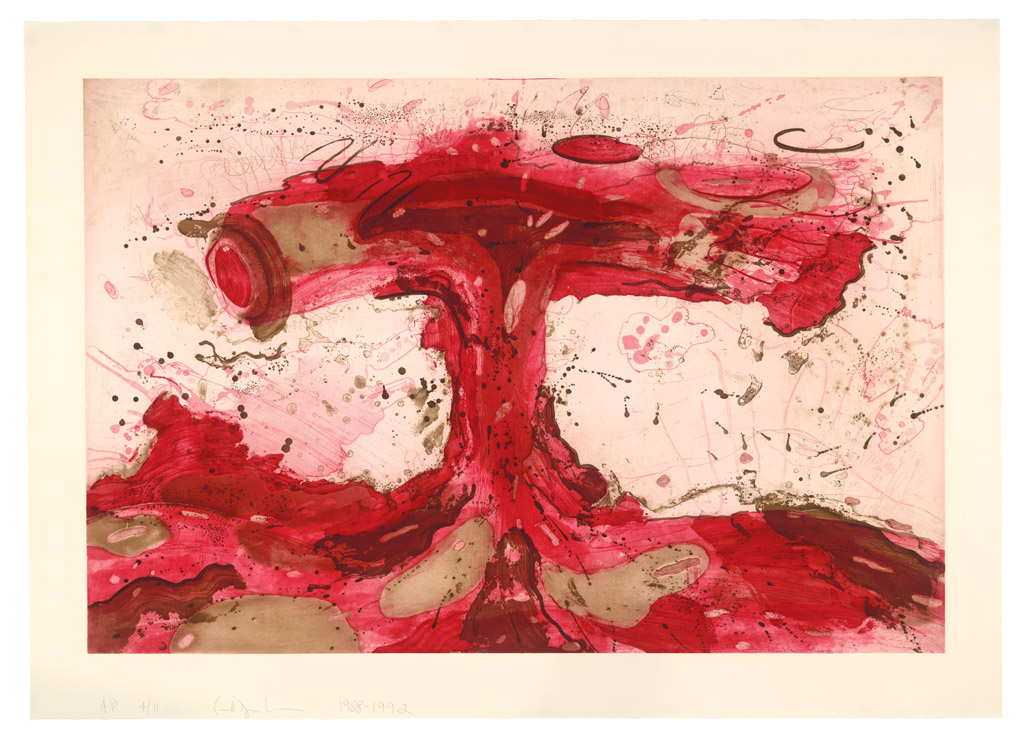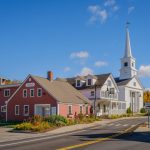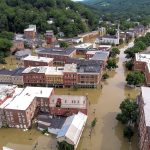An elite New England prep school might not be the place you’d expect to find one of the wild men of contemporary American art having a show, but then few if any prep schools have a museum to match Phillips Academy’s Addison Gallery of American Art in Andover, Massachusetts. Fewer still have such illustrious artist alumni as minimalist sculptor Carl Andre ’53, maximalist painter Frank Stella ’54, Neo-Geo star Peter Halley ’71, or the wild man in question, visionary painter/printmaker Carroll Dunham ’67.
From May 10 through July 13, the
Addison Gallery of American Art is featuring
Carroll Dunham Prints: A Survey, a traveling exhibition of some of the 300 lithographs, etchings, drypoints , linocuts, wood engravings, screenprints, digital prints, and monoprints Dunham has made since 1984. The exhibition is accompanied by the publication of
Carroll Dunham Prints: A Catalogue Raisonne, 1984-2006 by Allison N. Kemmerer and Elizabeth C. DeRose (Yale University Press, 2008; $65).
Carroll Dunham, born in the conservative art colony of Old Lyme, Connecticut, in 1949 and educated at Phillips and at Trinity College, would seem to have the pedigree of a traditionalist, but in truth he’s anything but. He arrived on the New York art scene in the late 1970s and had his first critical success with hallucinatory abstractions that were admittedly drug-induced. As he has matured and sobered, he has nonetheless continued to pursue a wild, sometimes comic, sometimes disturbing, vision of a surreal society of the mind, a cartoony dystopia primarily populated by biomorphic phantasms and painterly alter ego, a top-hatted figure with a phallic nose.
Heir to the mantle of tragi-comic figuration of the great Philip Guston (1913-1980), the painter who freed Dunham’s generation from the orthodoxy of abstraction by himself turning away from formalism and back toward content with a cartoon quality, Dunham has plumbed the depths of his own psyche and that of his time in manic imagery that the artist himself traces back to his childhood. In a
New York Times article written on the occasion of Carroll Dunham’s 2002 retrospective at the new Museum of Contemporary Art in New York, Hilarie M. Sheest quoted Dunham as saying, “I drew what I think I referred to as ‘savages being inundated by tidal waves.’ That’s still what I’m doing.”
“Savages being inundated by tidal waves”: an eerily appropriate evocation of the 21st century.
A more empirical take on the deterioration of the material world can be had in the Addison’s
Accommodating Nature: The Photographs of Frank Gohlke (April 12-July 13). Gohlke came to the fore as one of the New Topographics photographers in the 1970s, a designation given a group of photographers whose intentionally undramatic imagery was in part a reaction against the picturesque romanticism of legendary photographers such as Ansel Adams and Edward Weston.
Gohlke, along with photographers such as Robert Adams, Bernd and Hilla Becher, Stephen Shore, chose to focus their considerable attentions on the bland, the suburban, the everyday. Gohlke’s work is all about the man-altered landscape, whether he’s photographing the aftermath of a tornado in Wichita Falls, grain elevators in the Midwest, or the effects of the volcanic eruption of Mt. St. Helens.
Concurrent with the Carroll Dunham and Frank Gohlke shows, the Addison Gallery is also featuring
Then and Now, a survey of its own collection, which began in 1931 with 600 works and now numbers some 16,000. Plenty of reasons to get thee to Andover.
Addison Gallery of American Art, Phillips Academy, 180 Main St., Andover MA. 978-749-4015;
www.addison gallery.org








